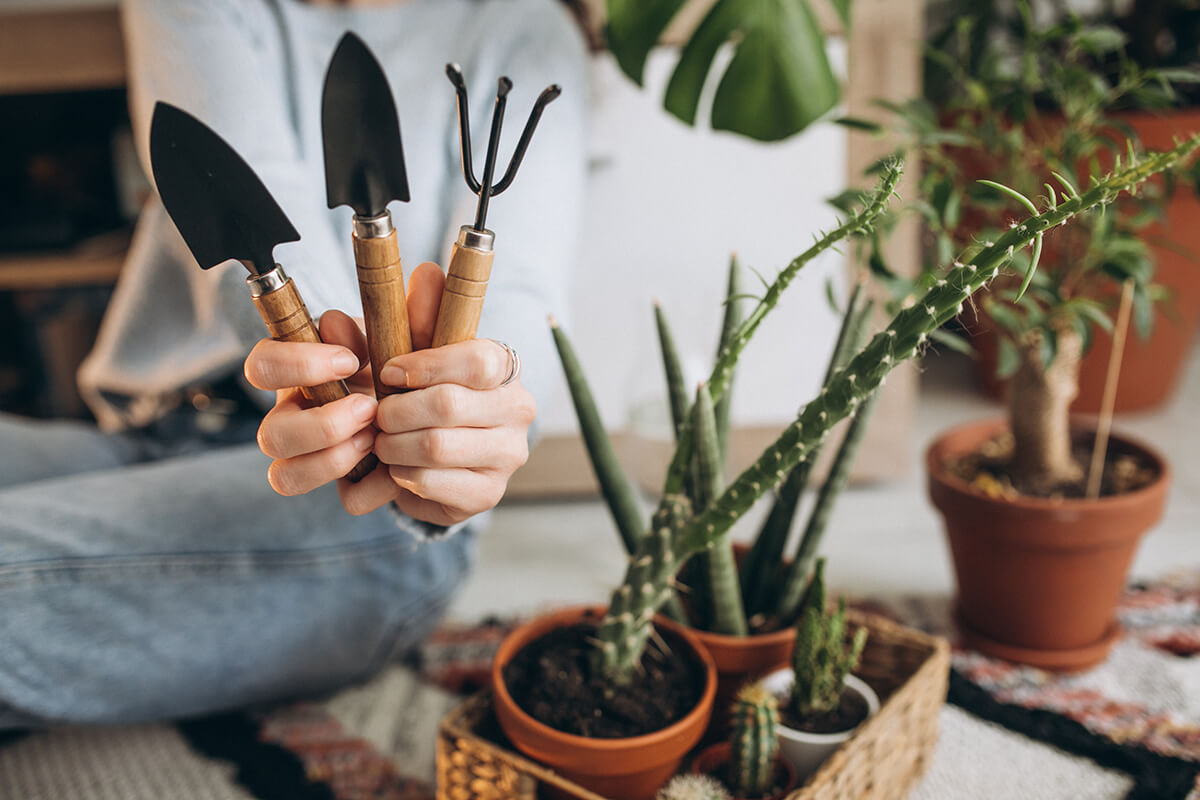Bringing plants into your home should make you feel cheerful, not frustrated! But nothing dampens the fun like clouds of tiny gnats circling your favorite houseplants. If you’ve noticed your soil crawling with little black bugs, you’ve likely met the infamous fungus gnats.
Don’t worry—dealing with a gnat invasion is a rite of passage for indoor gardeners. The good news? You can get your plants back on track, and the process is simpler than you might think. Repotting plants after fungus gnats is a friendly reset button for both you and your green companions.
Below, you’ll find everything you need to know about repotting plants after fungus gnats, from why it works to step-by-step tips, genuine encouragement, and some handy myths busted. Let’s help your leafy friends thrive again!
Why Are Fungus Gnats a Problem for My Houseplants?
Fungus gnats might look harmless, but their larvae (that’s a fancy word for baby bugs) love to snack on plant roots and decaying matter in wet soil. For mature plants, a few larvae aren’t always fatal, but seedlings and new cuttings can really suffer.
You may notice:
- Stunted plant growth
- Yellowing leaves
- Wilting despite enough water
While adult gnats are more of an annoyance than a danger, the larvae in soggy soil cause real trouble. Repotting plants after fungus gnats means giving your plants fresh, clean soil free of unwanted pests, giving them a new start.
When Should I Consider Repotting Plants After Fungus Gnats?
Not every gnat problem means you must reach for a new pot. Here’s when repotting is the best option:
1. Heavy Infestation: If you see dozens of gnats every time you water or move a pot, the population has likely taken over the soil.
2. Sticky Soil That Won’t Dry: Fungus gnats love persistently damp soil, especially if it smells musty or looks moldy.
3. Repeated Gnat Problems Despite Other Treatments: Sometimes sticky traps and letting the soil dry just aren’t enough.
If these situations sound familiar, repotting plants after fungus gnats can be your best move. It’s a confidence booster for both you and your plants!
How To Repot Plants After Fungus Gnats: An Easy Step-by-Step Guide
Repotting might seem intimidating, but it’s easier—and more fun—than you think. Here’s an encouraging checklist for repotting plants after fungus gnats:
1. Choose the Right Time: Morning or early evening is best. Give yourself plenty of daylight.
2. Gently Remove the Plant: Loosen the soil, tip the pot on its side, and slide out your plant, supporting the base.
3. Check and Rinse Roots: Carefully shake off old soil. Rinse roots under lukewarm water to remove any clinging larvae or eggs.
4. Inspect for Damage: Snip off any blackened, mushy, or rotten roots with clean scissors.
5. Prepare Fresh Potting Mix: Use a high-quality, well-draining soil. Look for mixes labeled for indoor plants.
6. Clean the Pot: Wash the old pot with soap and hot water, or use a brand-new one.
7. Repot Your Plant: Gently place your plant back, fill in with new soil, and water lightly.
8. Let Soil Dry a Bit Before Watering Again: Fungus gnats need moist soil to survive, so don’t keep the soil soggy.
Bonus tip: Put a layer of decorative stones or sand over the soil surface to discourage gnats from laying eggs.
Can Repotting Plants After Fungus Gnats Really Get Rid of the Problem?
Absolutely! Repotting plants after fungus gnats removes most of their eggs and larvae, instantly breaking the life cycle. Combine this with better watering habits (let your soil dry a bit between waterings) and you’ll rarely see fungus gnats again.
Common Myth: Repotting Is Too Stressful for Houseplants
Many new plant parents worry that repotting will “shock” or harm their plants. Here’s the truth: Most common houseplants are surprisingly resilient, especially if you’re gentle and follow the steps above.
If your plant looks a bit droopy afterward, give it time. Plants almost always bounce back once they’re free of pests and have room to grow.
What Else Should I Do After Repotting?
- Monitor for leftover gnats. Use yellow sticky traps near your newly repotted plant as a check.
- Adjust your watering schedule. Only water when the top inch of soil dries out.
- Increase sunlight if possible. Bright, indirect light helps soil dry faster and keeps plants happy.
Summary: Starting Fresh With Repotting Plants After Fungus Gnats
You don’t need to feel embarrassed about fungus gnats—every plant lover deals with them at some point. Repotting plants after fungus gnats is a gentle, effective way to protect your plants and your peace of mind. With a little care and patience, your leafy roommates will be thriving—and so will your confidence as a plant parent!


